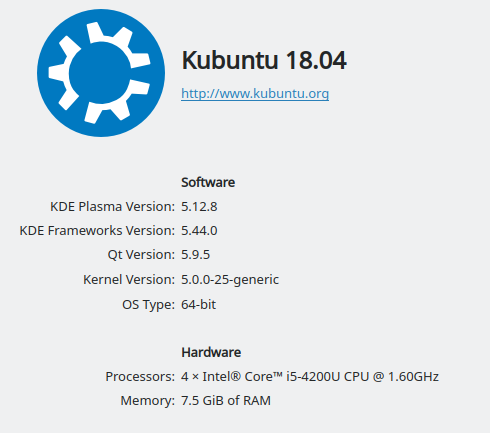First of all, I wish to thank the entire Kubuntu and Ubuntu staff and communities, you are doing a great work and it is highly appreciated!
This weekend, I decided to switch from Manjaro KDE to Kubuntu, because I believe there is much more stability, support and compatibility from the Ubuntu and Debian background. I always had difficulty to make any printers and scanners work well in Manjaro.
And as I thought, as soon as I booted on my brand new Kubuntu laptop, the wifi printer got discovered and the right drivers were all automatically installed! (You guys made my weekend right there! )
)
Unfortunately, the printer just disappeared overnight.
The only unusual things I did last night were this: I installed DejaDup and firewalld, both from the Discover GUI. My spidey sense tells me that firewalld is the cause.
After looking at similar problems on different forums, here is what I did in order to solve this:
I tried to reboot after each time I tried something, didn't work.
I tried to open these ports: 139/tcp, 445/tcp, 137/udp, 138/udp. Didn't work.
I tried: sudo systemctl start cups-browsed , didn't work.
Then, I tried to make it work by manually configuring it, just like I used to do on Manjaro KDE.
System Settings - Printers - Add printer - Manual URI ( socket://PrinterIpAdress ).
Then, I tried to choose the right driver, which wasn't in the default Kubuntu epson driver list. I tried to find it in Discover but I couldn't find anything Epson related.
But since everything was working insanely good after the fresh install, I know the drivers are in there, somewhere...
That's when I gave up trying to make it work over network.
I plugged it in via USB. the printer was automatically detected, however the driver was still missing.
I am in need of your help, and I thank you for your time and assistance,
PatLau
Attached is a screenshot of the Info Center.

This weekend, I decided to switch from Manjaro KDE to Kubuntu, because I believe there is much more stability, support and compatibility from the Ubuntu and Debian background. I always had difficulty to make any printers and scanners work well in Manjaro.
And as I thought, as soon as I booted on my brand new Kubuntu laptop, the wifi printer got discovered and the right drivers were all automatically installed! (You guys made my weekend right there!
 )
)Unfortunately, the printer just disappeared overnight.
The only unusual things I did last night were this: I installed DejaDup and firewalld, both from the Discover GUI. My spidey sense tells me that firewalld is the cause.

After looking at similar problems on different forums, here is what I did in order to solve this:
I tried to reboot after each time I tried something, didn't work.
I tried to open these ports: 139/tcp, 445/tcp, 137/udp, 138/udp. Didn't work.
I tried: sudo systemctl start cups-browsed , didn't work.
Then, I tried to make it work by manually configuring it, just like I used to do on Manjaro KDE.
System Settings - Printers - Add printer - Manual URI ( socket://PrinterIpAdress ).
Then, I tried to choose the right driver, which wasn't in the default Kubuntu epson driver list. I tried to find it in Discover but I couldn't find anything Epson related.
But since everything was working insanely good after the fresh install, I know the drivers are in there, somewhere...
That's when I gave up trying to make it work over network.
I plugged it in via USB. the printer was automatically detected, however the driver was still missing.
I am in need of your help, and I thank you for your time and assistance,
PatLau
Attached is a screenshot of the Info Center.









Comment